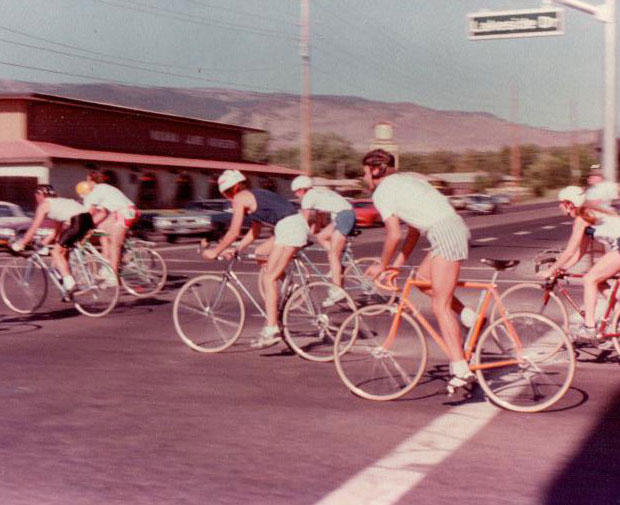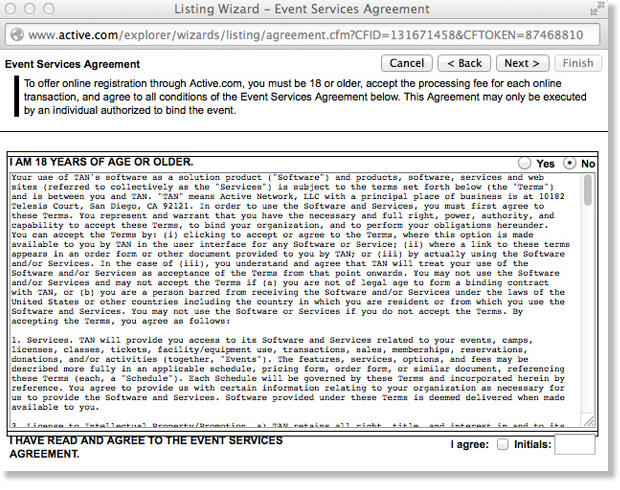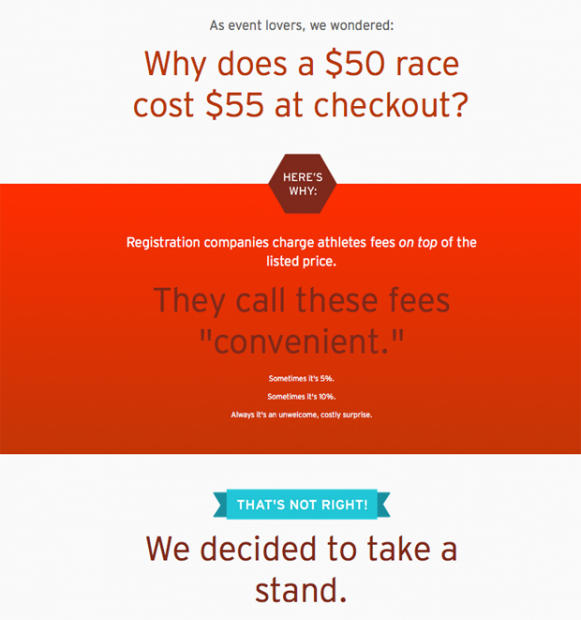Online Registration
I began as a footracer, in 1970. Though only 13-years-old I was required to buy an annual AAU membership to participate in any road race. This was pre-running-boom, a 300-person race in Southern California was considered pretty large, and the timing and data systems were stopwatches, lined white pages, a pen, and numbered popsicle sticks.
Moving forward 13 more years I participated in 1983 in the Race for the Cure as one of tens of thousands of runners. The year before I’d run in Bay to Breakers with 100,000 starters, if you count the bandits. I distinctly remember thinking how easy it was just to show up and race. No AAU card necessary. There are a number of historical reasons for the boom that fueled running in the 70s, and running and triathlon in the 80s, and I have arcane answers to explain some of this. Just, I think Steve Prefontaine and his full frontal attack on the AAU – breaking that organization’s stranglehold on running – was as impacting as anything.
Then triathlon in the U.S. stalled. The decade of the 90s was disastrous for triathlon. In 1999 triathlon took off again. Like a rocket. And lasted 13 or 14 years before flattening again. Why? I have some demographic arguments to trot out; some people think the Olympic inclusion was important. But mostly…
Convenience
In 1999 Jim Woodman merged his Florida company Active Athlete with Racegate, a San Diego company owned by Mitch Thrower and Scott Kyle. The new company, headquartered in La Jolla, was called ActiveUSA, morphing to Active and now to Active Network. I believe that ActiveUSA was the jumper cable that reanimated triathlon. The nexus between this company and its technology and the very moment when triathlon began its upward steep rise is too obvious not to acknowledge. Steve Prefontaine freed us of the AAU in 1978. Active freed us from mail-in registration in 1999.
Online registration saved incalculable man hours and a ton of money for RDs; precluded the need even to print an entry form; and relieved RDs of the all-nighter data entry “parties.” That alone would have made this technology as revolutionary as chip timing, but even chip timing had its limit. It didn’t change consumer habits. Online registration did.

National and regional magazines, and their race calendars (and eventual online calendars) alerted people to the existence of races (if you haven’t yet, migrate over to Trihistory.com and read Harald Johnson’s The Birth of Triathlete Magazine). Online registration allowed competitors to take the affirmative step at that moment, without needing to obtain an entry form, write a check, stamp the envelope and mail it in.
ActiveUSA allowed the consumer to enter a process. The online receipt wasn’t just a payment confirmation, it was the athlete’s permission slip to commence his journey.
The Experience
When I competed in the Hawaiian Ironman in 1981 (image above) it was a cultural, social and athletic experience that did not begin at the gun and end at the finish, spanning 11 hours and 22 minutes. (And yes, the roads were that empty during the race!) In one sense it began when I sent in my entry. Limited just to the event itself the experience from the moment I got on the airplane bound for the Ironman’s first ever occurrence on the Big Island to the time I landed back on the mainland was a mood-enhanced week. When I returned from my Kona experience I did what Jim Curl, Dave McGillivray, Rob Vigorito and so many of us did: I sought to reproduce something of the experience I had for those in my hometown. My first produced race was in 1982 (image below). Yes, draft legal!
Why some events succeed and others fail fascinates me. It took me a long time to acknowledge what I now think is a truism: It’s the totality of the social, cultural and athletic experience that makes an event hum. No one who’s camped for 3 or 4 days at Wildflower comes away thinking that it’s only the race that drives them there. No one who raced Kona in the 1980s can say that the special nature of the course is what drew them there. Norseman, Alcatraz, Roth are more than a trio of good courses.

Something magical takes place at these events, and color, mud and music runs are attempts to infuse into a 5k or half-marathon enough social oomph to transform a footrace into a not-to-be-missed experience.
If the experience starts when you arrive at a race venue, the journey starts at registration. This is the moment when the RD says “hello” to his customer. Yet when I ask RDs why they choose a particular registration vendor they almost never answer in terms other than what the vendor does for the RD. I don’t believe I have ever heard an RD say that he chooses his registration company because of the ease of use for his customers.
This slays me. When I stand at the counter at the coffee house the barista is my first interaction with that company. He can be surly or nice, fast or slow, and when I hand my credit card over my personal information is either treated safely and discretely or it isn’t. Yes, it’s the coffee that I want. But the cultural experience – including how I tender my payment – is a large part of why I choose that coffee house.
Maybe that's not a fair analogy. I do think it’s fair to say that the barista's behavior might not be what drives me to the coffee house, but a bad experience might be what sends me away. Are some customers driven away from athletic events because of bad interactions at, or eventual ramifications of, the registration process?
Active set a new standard for convenience. But it has weathered criticism including a piece on Outside Online published in October, 2014, entitled, How Active.com Became the Most Hated Name in Race Registration. Ouch.
If not Active, then…
Over the next week or so I’ll publish a series comparing Active, Events, ChronoTrack, EventBrite, Athletepath, IMAthlete and others. This isn’t as straightforward as it would have been 5 years ago. Now these companies are very sophisticated in their functionality and what end users individually say they want and what they really end up using is not always a match. Yes, we’ll compare costs and features but it’s tougher now to compare them apples-to-apples. Still, we shall endeavor.
Is Active due the scorn heaped on it by Outside’s article? We’ll investigate and report on that. But I think there were a number of important elements left out. Outside’s mission for its article was not to place Active’s current position in any historic context, nor to discuss whether Active is a fit or less fit registration vendor compared to those in its competitive set. Indeed, in the last paragraph of the article we read, “Active may soon be unavoidable for anyone looking to sign up online for an outdoorsy activity.” As of last year there were 45 companies providing this service. As of today that number is 82. Active must be doing a number of things right to retain such a hegemony on the market.
But maybe what it's doing right is in the eye of the RD, rather than in the eye of the end-user. Is that a gap Active needs to close in order to keep its market share? Stay tuned.



